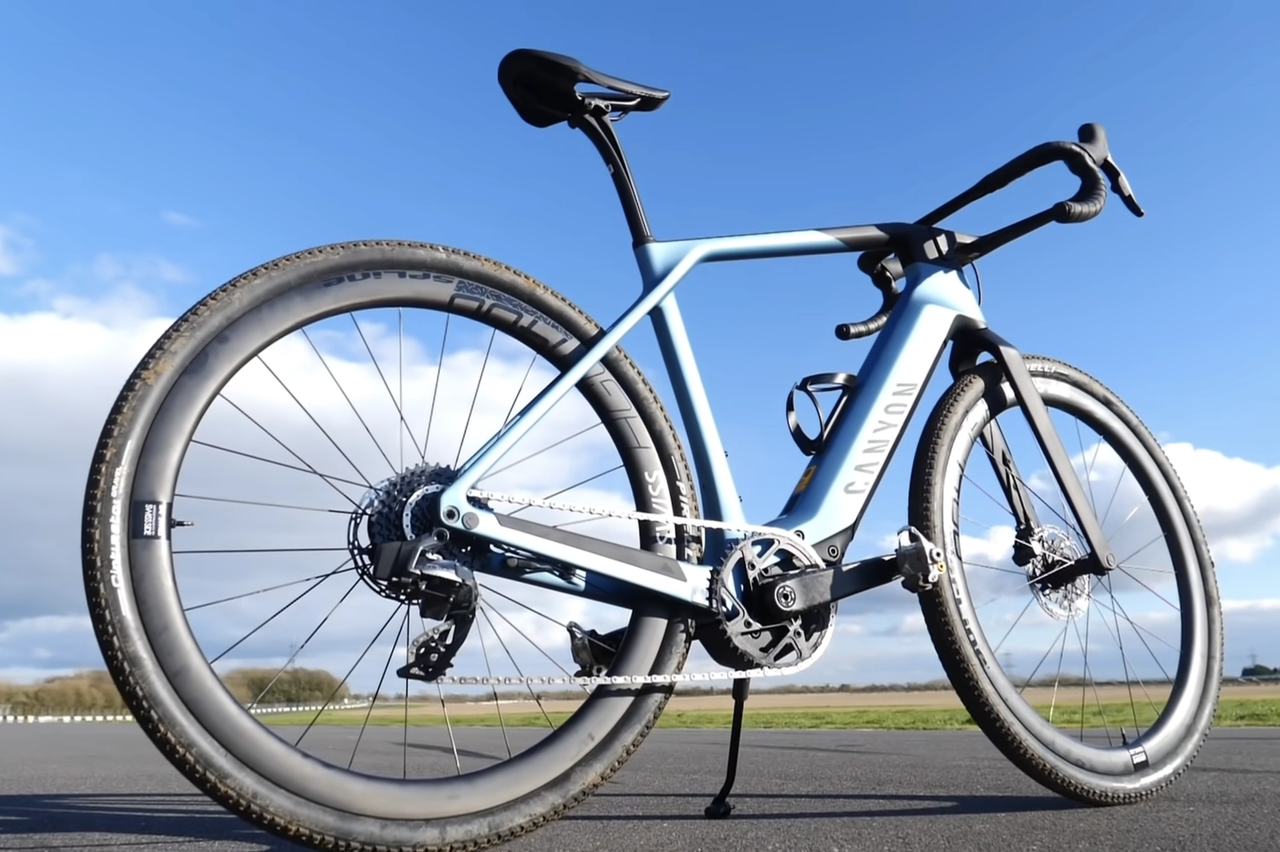Complete guide to e-bikes: What are they and should you buy one?
Electric bikes in depth: How they work, the pros and cons, and the legality across the UK, EU, Australia and the USA
James Howell-Jones
Junior Writer
© GCN
Canyon Grail e-bike
E-bikes, also known as electric bikes, eBikes, or electric-assisted bicycles, combine the power of the rider with the power of an electric motor to make cycling easier.
They are becoming more and more popular each year. Now, you can get pretty much any kind of bike, be that a road bike, mountain bike or even a folding bike, with electric assist.
If you are wondering whether an e-bike is right for you, or simply want to know more about how they work and which options are available, this guide is for you.
We’ll go through the different types of e-bike, how e-bikes work, as well as going through the legality of e-bikes in the UK, EU, Australia and USA.
Read more: 10 benefits of riding an e-bike
Contents (jump to)
- What is an e-bike?
- How does an e-bike work?
- E-bike power output
- E-bike speeds
- Do e-bikes need special batteries?
- E-bike range: How far can you go on a single charge?
- What types of e-bike are available?
- Can you convert a regular bike into an e-bike?
- Are e-bikes worth it?
- Does riding an e-bike improve your fitness?
- Do you need insurance to ride an e-bike?
- Are e-bikes legal?
What is an e-bike?
An e-bike is a bicycle with an integrated electric motor and battery that assists you when you pedal. Legally, an e-bike is the same as a regular bike, so you can ride it without a licence, registration or insurance, and without a helmet, if you choose.
How does an e-bike work?
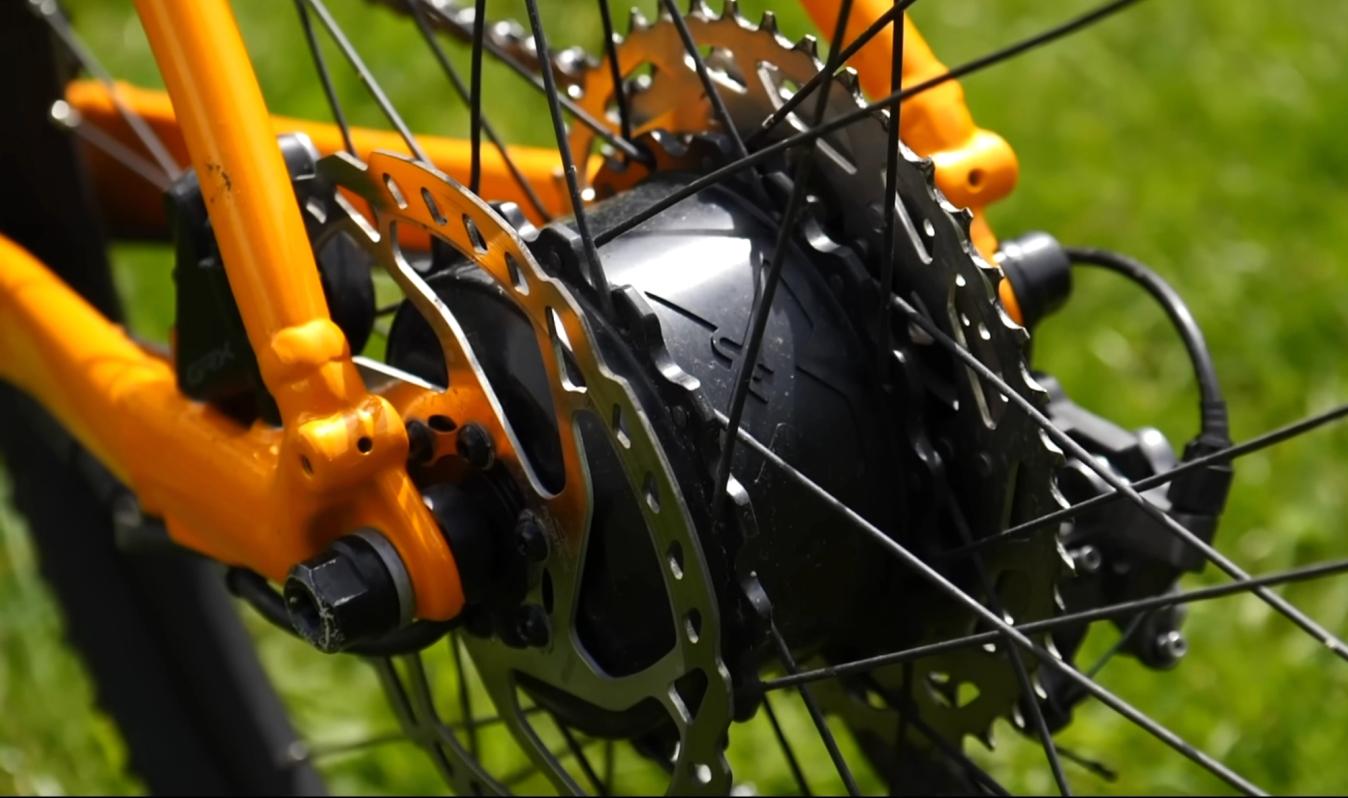
© GCN
A hub motor on a gravel e-bike
E-bikes have an integrated lithium battery, usually in the downtube, and a motor in one of three places: either the front hub, the rear hub, or the bottom bracket. As you pedal, the motor in the bike kicks in, and helps you move along.
In most cases, the power output can be set between three or four options, so you can decide whether you want an easy ride with maximum assistance, or if you want to save battery and do more of the hard work yourself. The amount of power the bike is capable of giving you will vary depending on the specification of the e-bike.
Read more: London rental e-bikes to triple amid soaring demand
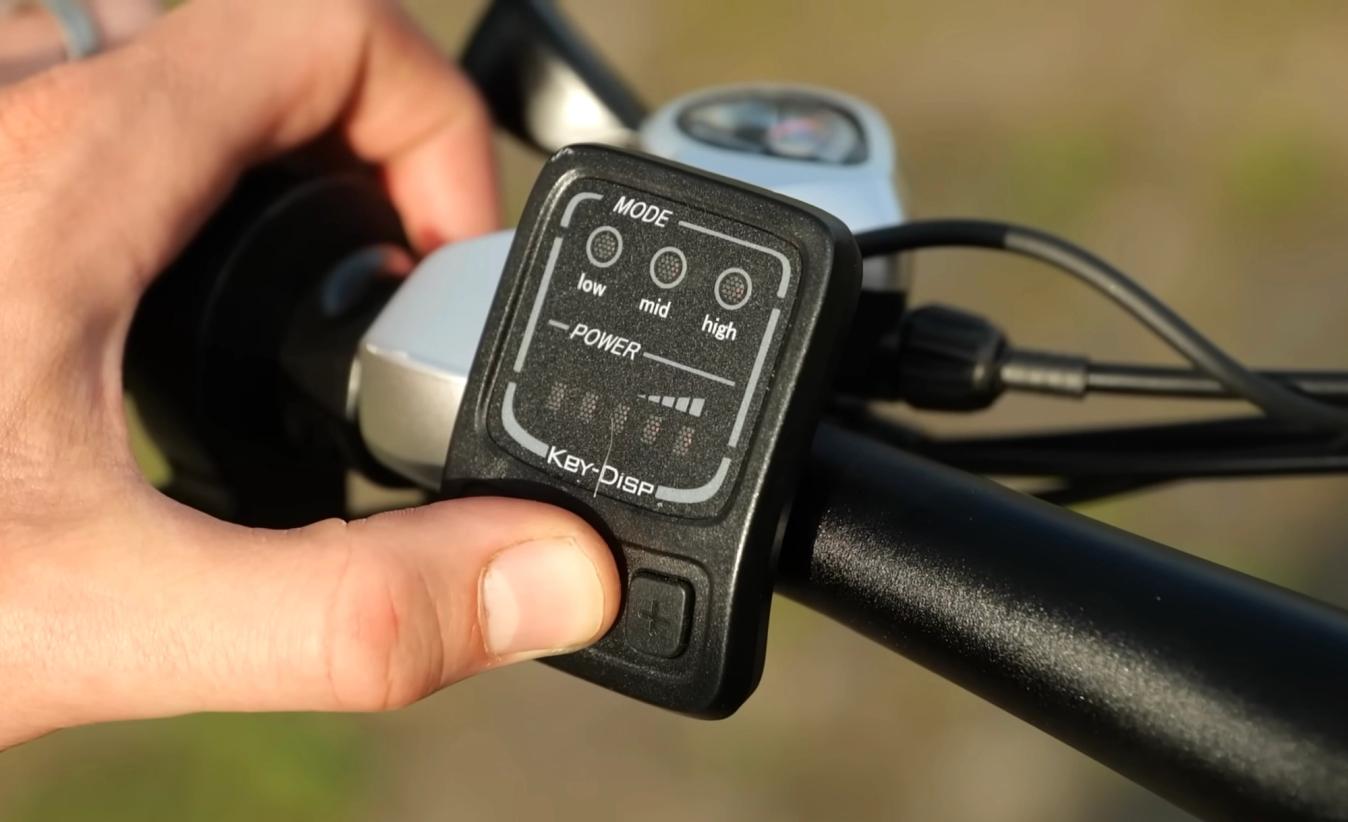
© GCN
E-bikes usually have a button or panel to choose a mode
How hard do you have to pedal on an e-bike?
E-bikes typically output an amount of power that’s proportional to how hard you pedal the bike, so if you put more power through the pedals, the motor will put out more power too. This is what makes e-bikes feel so natural and intuitive; you pedal harder to go faster, and pedal softer to maintain speed or slow down, just like on a normal bike.
Lower spec e-bikes might not have a power-matching system. Instead, they will have a simple cadence sensor that checks to see if you are turning the pedals. If the pedals are turning, the motor will provide a set amount of power.
Read more: Up close with the Lotus Type 136: Space tech at the heart of ultra-light ultra-expensive e-bike
E-bike power output: How does it compare to a regular cyclist?
There is a limit to the amount of power an e-bike can put out. In the UK, EU and Australia, e-bikes must have a maximum power output of no more than 250 watts. In the US, e-bikes must have a power output of no more than 750 watts, although the limit varies from state to state. For reference, a keen amateur could probably hold 250 watts for about an hour.
What's an e-bike's top speed? How fast can you go?
Speed is limited too. In the UK and Europe, e-bikes are not allowed to power the rider above 25kph. In the USA, that limit goes up 20mph in some states, and 28mph in others. That means the motor will assist you up to that top speed, but if you go beyond it, the motor will stop assisting and you will be doing all the work yourself.
Do e-bikes need special batteries?

© GCN
E-bike batteries are usually removable
E-bikes have a lithium-ion battery which is made up of loads of smaller lithium-ion cells grouped together. The number of cells will determine how quickly the battery determines how quickly they can supply power, and how long for.
Lithium-ion batteries are used in smartphones, power tools and electric cars. They are far more resilient and long-lasting than traditional lead-acid batteries. If properly looked after, they can go through thousands of charge cycles before they need to be replaced.
Typically, e-bikes use 36v batteries that can deliver power when they have a charge of between 42v and 30v. That means when your e-bike says it’s 100% charged, the battery is charged to around 42v. When it says it has 0% charge, it means it’ll be at about 30v.
Read more: Yamaha launches e-bike battery subscription service to replace home charging
E-bike range: How far can you go on a single charge?
Accurately predicting how far you can travel on a single charge is almost impossible. It depends on so many factors, including how much climbing you do, how much acceleration and deceleration there is, how rough the surface is, and how much pedal assist you use.
Even so, as a general rule of thumb, on tarmac, a typical e-bike will probably last for long enough to ride in the region of 100km.
Predicting range might be difficult, but comparing the range capacity of different e-bikes is easy. The key number to look for is the Watt Hour (Wh) rating an e-bike has. This figure combines the capacity of the battery with the power of the motor. When browsing e-bikes, the Watt hour figure is the number to base your range comparison on.
On the low end, an e-bike might deliver 400Wh. On the high end, for instance on a high-end e-MTB, that might be approaching 1000Wh.
What types of e-bike are available?
You can get more or less any kind of bicycle as an e-bike. The most common types of e-bike are hybrid bikes and mountain bikes. Electric road bikes are common too, and many of them look almost indistinguishable from non-electric versions. You can also find folding bikes, recumbent bikes, gravel bikes and cargo bikes with electric motors.
Read more: Every type of bike, explained
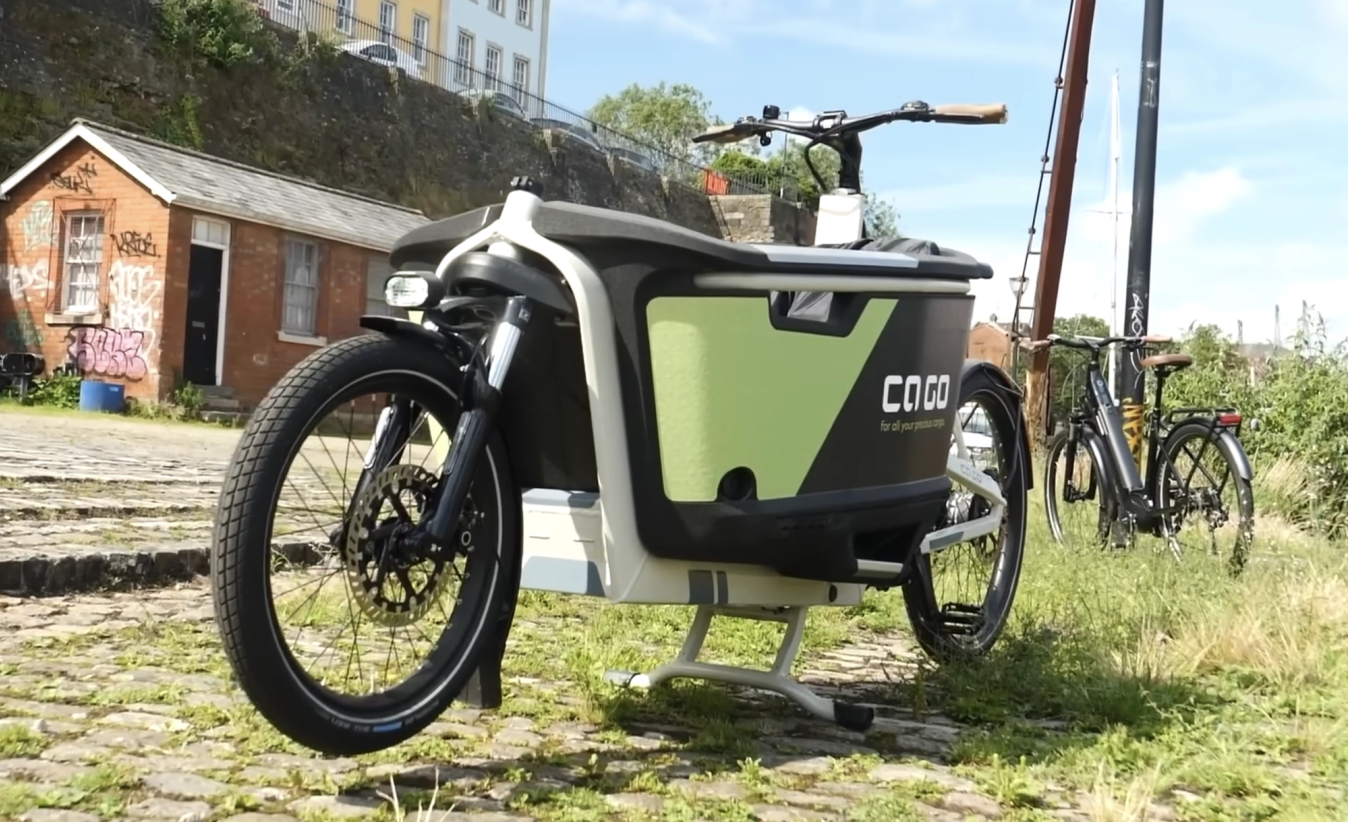
© GCN
E-cargo bikes are great for carrying larger loads
Can you convert a regular bike into an e-bike?
Yes, there are plenty of e-bike conversion kits available. Most of these are a replacement for the front or rear wheel, where the regular bicycle wheel is replaced by a wheel with a motor built into the hub. These will work with a battery that usually attaches to the downtube of the bike, often to the bottle cage bolts.
To be legal, these e-bike conversion kits must also have a pedal sensor, so the motor knows if you are turning the pedals or not. If you see a conversion kit that only comes with a throttle, it does not classify as an EAPC, and to ride your bike with it, you will need a licence, registration and insurance, just like a moped.
Are e-bikes worth it?
E-bikes are a lot more expensive than equivalent spec regular bikes, but if you consider the versatility of an e-bike, we think they are worth the extra. Consider their value as a replacement for a car for local errands: e-bikes are great for shopping, commuting and generally getting from A to B quickly and efficiently, and they’re far cheaper to run and repair than a car or motorbike. They’re faster than non-assisted bikes, and you will arrive at your destination without getting hot and sweaty.
Adding to the versatility is the fact that if you do want to work hard, you can either switch off the electric assist or put it on a low setting, and have a tough, fitness-boosting bike ride.
Read more: How to replace your car with an e-bike
Does riding an e-bike improve your fitness?
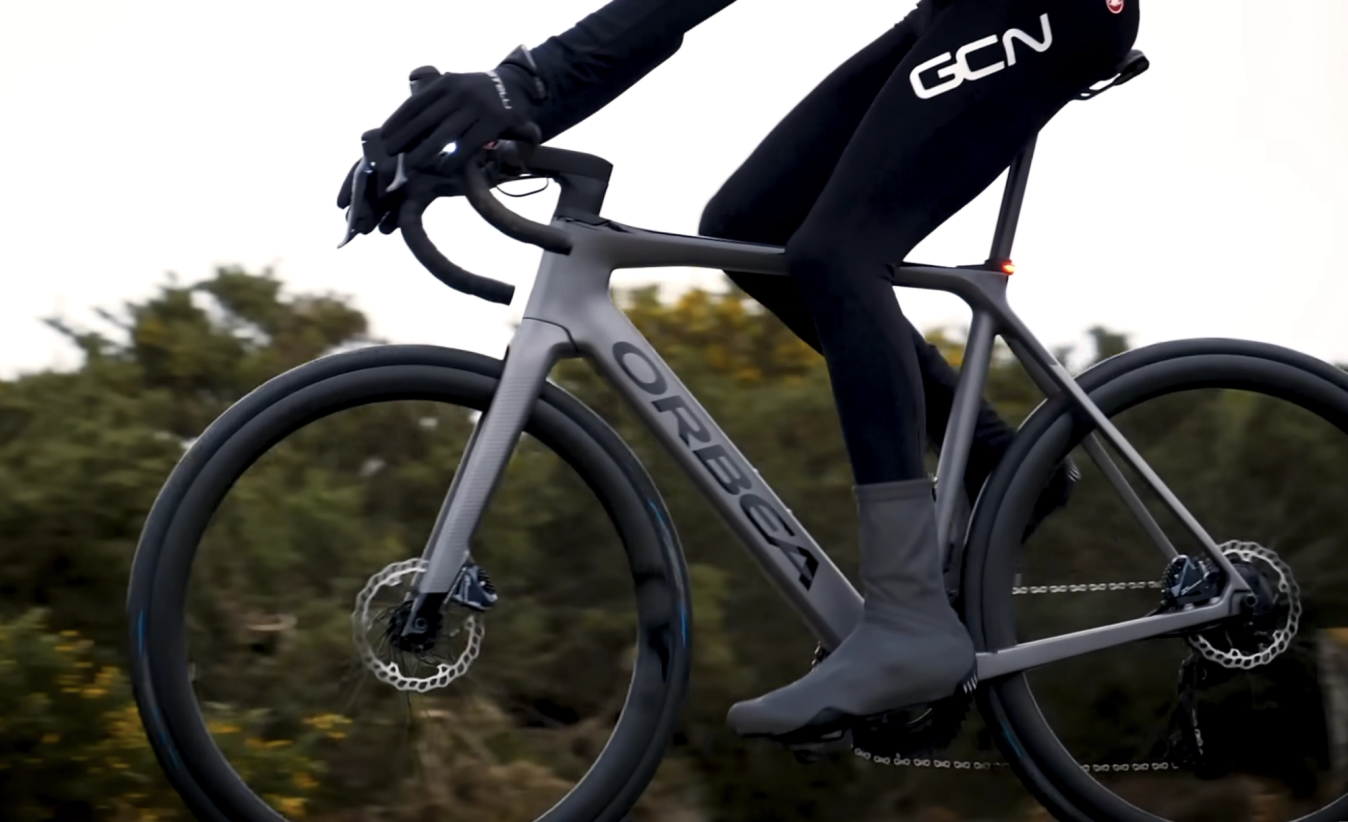
© GCN
E-bikes can make you fitter, and look at home on any group ride
E-bikes can make you fitter. Granted, you don’t have to try as hard to move along, but as a result, e-bike riders tend to go further and ride for longer. In fact, studies such as this one have shown that e-bikers have similar activity levels to non-electrified cyclists.
Do you need insurance to ride an e-bike?
You do not need insurance to ride an e-bike. Since they have the same legal treatment as regular bicycles, there is no need for insurance, a licence or registration.
However, given the high cost of e-bikes, and the high speed that they allow you to ride, it might be wise to take out insurance to protect your bike from damage or theft, and to protect yourself if you have a collision.
Are e-bikes legal?
E-bikes that comply with the UK and EU government’s definition of an e-bike are legal, and fall under the same legal categorisation as normal, non-electric bicycles. That means that all the same laws apply, such as using bike lights at night, following traffic laws and not riding on pavements.
It also means that, like with a regular bicycle, you do not have to have a driving licence, get any kind of registration or insurance. It also means you don’t need to wear a helmet, but given the higher speeds you will reach on an e-bike, it’s a good idea to wear one anyway.
Not all electric bikes you will see for sale are legal, though. Online marketplaces are full of non-regulation e-bikes, many of which come with throttles, illegally powerful motors or unlimited speeds. These illegal e-bikes also tend to come with uncertified batteries that pose a serious fire risk whilst they are being charged.
Read more: Dangerous e-bikes: Trade-in scheme falls flat in New York
What is a legal e-bike in the UK and EU?
In the UK, a legal e-bike fits within the government’s definition of an ‘EAPC’ (Electrically Assisted Pedal Cycle). In Europe, there is a range of terminology, but the definition is the same.
To fit within this definition, a bike must comply with the following requirements:
- It must have pedals that can be used to propel it
- It must show either the power output or the manufacturer of the motor
- It must show either the battery voltage or the maximum speed of the bike
- It’s electric motor must have a maximum power output of 250 watts
- The electric motor must not be able to propel the bike when it’s travelling more than 15.5mph
It’s worth noting that a legal e-bike may have more than two wheels, so electric tricycles or even four-wheeled cycles can be classified as standard EAPCs.
When it comes to throttles, things get a little bit complicated. Fully throttle-powered e-bikes are illegal, but in the UK, EU and Australia, you can have throttle-power, as long as it is limited to 6kph (3.7mph). This is a ‘walk mode’, so the bike is easier to push and manoeuvre. It’s also there so that disabled, injured or older riders can use the throttle to get moving, then place their feet on the pedals once the bike is balanced.
Read more: EU Court of Justice rules that e-bikes are bicycles – not motorbikes
What is a legal e-bike in Australia?
In Australia, there are two classifications of e-bike. First, we have Electrically Power Assisted Cycles (EPAC, also known here as Pedalecs). These are broadly the same as European and British e-bike rules. Of course, this being Australia, you will be required to wear a helmet by law, as with ordinary bicycles. You also need working front and rear lights at all times.
The second classification in Australia is ‘power assisted cycles’. These are less powerful than conventional e-bikes, with the limit set at 200W, but can be operated with a throttle. The top speed of the motor must be limited to 25kph.
What are the e-bike laws in the USA?
Read more: USA: Can I get a rebate for an e-bike? Our state-by-state guide
The rules surrounding e-bikes vary from state to state, but the nationwide law says that a “low-speed electric bicycle” is a vehicle with two or three wheels, with a maximum motor output of 750 watts and a top speed of 20mph. As far as the government is concerned, such a bike is the same as a normal bicycle.
This is not the same everywhere though. In many states, e-bikes are divided into three categories, each with their own usage rights and permissions:
Class 1
- E-Bikes with motors that can only be ridden with a pedal assist system (PAS) and the motor cuts out at 20 mph.
Class 2
- E-Bikes with a throttle and PAS where the motor also cuts out at 20 mph.
Class 3
- E-Bikes with a PAS only but receive motor assistance up to 28 mph.
Classless
- Other e-bikes that don’t fall under any class in the system (for example, those without pedals, those with a throttle that can assist up to 28 mph, and those with motors over 750W)
To find out which e-bikes are allowed in your state, check local legislation.
Do you own or use an e-bike? Are you thinking of getting one? Let us know your thoughts, questions, or concerns in the comments section below. And for more on e-bikes, head to the lifestyle and tech sections of the GCN website.
